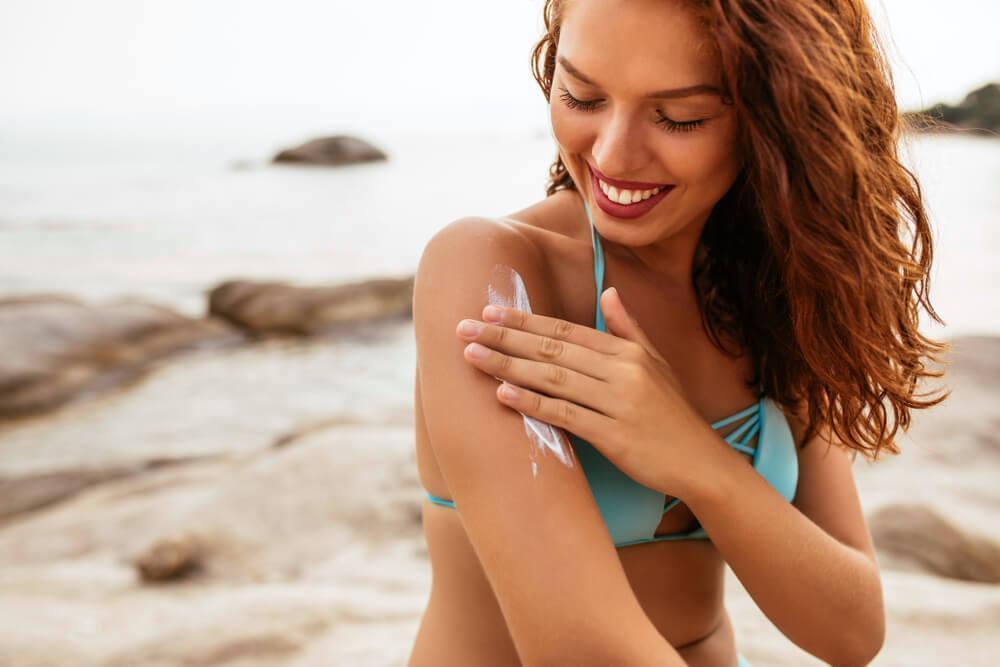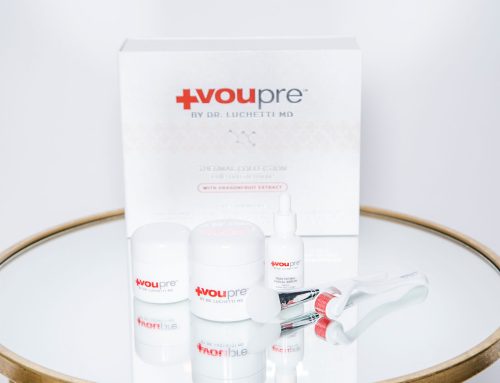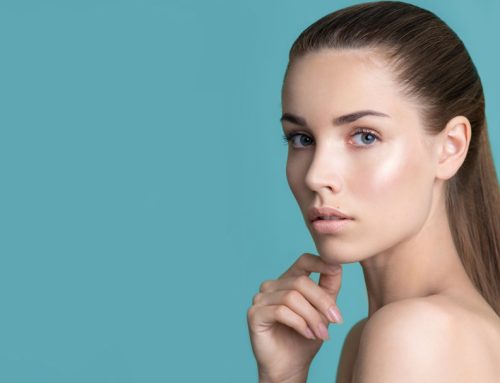Do you remember a time when sunscreen actually meant sunscreen? Turns out, the word sunblock is not so P.C. anymore with the marketing companies. In 2013, the FDA banned the term sunblock because of the concerned that consumers might overestimate the product’s efficacy.
Call it what you will, sunblock/sunscreen has proven to be pretty effective over the years, especially if you use it diligently. Proper sunscreen application has been shown to slow the effects of premature aging. The American Society recommends the use of sunscreen because of its ability to fight skin cancer and melanoma.
Most simply, the term sunscreen refers to any topical product that reflects or absorbs UV rays and protects against sunburn. However, sunscreen can be more complicated than it seems. Here are some truths about sunscreen to help you make the best choices.
What’s the Difference Between Physical and Chemical Sunscreen?
Think back to a time when sunblock never quite rubbed in and you had to check with your friends to make sure you didn’t have streaks on the sides of your nose. That’s the time of the physical sunscreen. Physical sunscreen contains active ingredients like zinc dioxide and titanium dioxide which are naturally broad spectrum. That means they protect from both UVA and UVB rays by literally sitting on top of your skin and deflecting the rays of the sun. Although physical sunscreens have been micronized to go on easier, the chemical sunblock remains the block of choice.
While physical sunscreens go to work immediately, they can rub off pretty quickly as well. Chemical formulas may take 20 minutes to sink in completely, but once they do, they absorb the sun’s rays like a sponge. However, dermatologists warn against chemical sunscreens. According to Cathleen London, “some of the chemical sunscreens can actually cause free radical formation which leads to more damage, in the long run, the ideal combination is supplementation with physical sunscreen and antioxidants.”
Active Ingredients
What ingredients give sunscreen such superpowers? Even Superman had his kryptonite. How can a simple lotion protect our skin from a force as seemingly omnipotent as the sun? As you may imagine, its more about the minerals and chemicals in the lotion than the lotion itself. Besides moisturizers and other inactive ingredients, sunscreen may contain one or more of the following:
- Organic chemicals that absorb UV light (chemical sunblock)
- Inorganic particles that reflect, absorb and scatter UV light, such as titanium dioxide and zinc oxide or both).
- Organic particles that absorb UV light but also chromophores that scatter and absorb light a fraction of the light – much like inorganic particles do.
These active ingredients are arranged in a structure that absorbs high energy ultraviolet light from the sun and releases it as low energy rays. This prevents the skin from exposure to the skin damaging UV rays that we so desperately seek to avoid.
What to Look For in Sunscreen
Sunscreen will never make the claim that it is made of only ingredients that you can pronounce. There are words on the labels of sunscreen bottles that would strike fear in the hearts of even most prodigious spelling bee champions. Even if you’ve seen an ingredient on a sunscreen bottle and pronounced it correctly (kudos to you!) you still may be a little confused about what it is and how it works. Here is a little breakdown on some sunscreen’s major players in the industry today.
Avobenzone
Avobenzone is an oil-soluble ingredient introduced to chemical sunscreens in the 1990s. Unlike sunscreens that came before it, avobenzone is broad spectrum. We love broad spectrum! Broad spectrum means it protects skin from UVA and UVB rays. The only problem with avobenzone is that sunlight can break it down. Many of the inactive ingredients in sunscreen are chemical stabilizers that slow the breakdown of avobenzone to keep it active and potent. Most of the organic compounds in sunscreens degrade and lose their effectiveness over time, so always check your expiration dates.
Ecamsule
Another UVA-blocking ingredient is Ecamsule. It’s been available since 1993in the US and Canada as Mexoryl SX. It is sold in the US today in L’Oreals Anthelios SX, but it ain’t on the cheap. A 3.4-ounce tube (enough for 4 full body applications) will run you about $30.
Titanium Dioxide or Zinc Oxide
Gone are the days when zinc oxide was just a strip of fluorescence on a lifeguard’s nose. While the opaque look may have gone out of style, these UVA blocking options have not. For some less expensive UVA blocking, look for sunscreens with titanium or zinc oxide. They are now made to go on easier.
SPF
If you thought the ingredient list on sunscreen was a challenge, just wait till you do the math. The SPF number refers to “skin protection factor.” Traditional wisdom would tell you the higher the number the higher the SPF. That means you’re going to hit up Amazon for a subscription of the latest SPF 70 asap, right? Not so fast. There’s a little more you should about SPF before you confirm your order.
Let’s start with UVA and UVB rays. UVA rays are the ones that cause sunburn. UVB rays are the ones that cause the damage associated with premature aging and wrinkles. SPF was introduced in 1962 to measure sunscreen’s resilience to UVB rays.
To determine a product’s SPF, twenty lucky sun sensitive are chosen to sit out in the sun (sans sunscreen) until they burn. Once the participants are as red as a lobster, the testers figure out how much time it took them to achieve that rosy glow. Then the testers redo the test, this time using sunscreen. After they get the numbers, the testers divide by the “with sunscreen” number by the “without sunscreen” number and round it to the nearest 5. The answer is the SPF.
That means that you can figure out how long you can stay in the sun by using this equation:
Minutes to burn w/o sunscreen x SPF number = Maximum length of sun exposure
That also means that you don’t need an SPF 70 to keep safe in the sun; in fact, using an SPF of 70 can actually be dangerous.
UVB Absorption
Not only does the SPF indicate a longer sun exposure time, but it also indicates the level of UVB absorption, but these numbers don’t increase exponentially. For example, an SPF 15 absorbs 93% of UVB rays, but an SPF 30 absorbs about 97%. You double the SPF, but the UVB absorption only increases by 3.4 %. If you’re confused, you’re not alone.
It turns out so many people were confused by this that the FDA decided to put a cap on SPF numbers. Thirty was the decided cap because above that number, overall skin protection would only increase by a trivial amount. High numbers could be misleading because people would interpret them a guaranteed proof of all-day protection. Anything above SPF 30 would be labelled at 30+.
Unfortunately, the sunscreen manufacturers were not so hip on the idea. Despite the FDA’s good intentions, the actual cap was set by the manufacturers. As of today, it’s at SPF 70.
So, what’s wrong with this SPF 70 cap? Firstly, we know that most people only apply half the amount of sunscreen necessary and we also know that sunscreen needs to be applied regularly. If you are looking forward to a 12-hour bake and don’t apply correctly, your skin may be in for a not so sunny forecast.
How Much Sunscreen Do You Really Need?
When it comes to sunscreen, the question may not so much be “How much do you need?” so much as, “How much more do you need?” Even when we’re applying an SPF of at least 30, a new study shows that we’re not applying it generously enough, causing it to lose 40% of its effectiveness.
As we know, SPF 30 blocks out about 97% of the sun’s rays, but if we don’t use enough of it, that percentage is inaccurate. According to a research study from University College London, there’s a formula behind your sunscreen formula. The general rule of thumb is to apply sunscreen at a two-inch thickness for every square centimeter of skin.
No problem, right? We all know how much skin we have down to the square centimeter. We’ll just multiply that by two and get our rulers out. Never fear. Study author Antony Young has provided us with a few general statistics.
“An average woman has about 1.7 square meters of skin. For a whole-body sunscreen, she will need 33 grams (1.1 fluid ounces). With three whole-body applications a day, that’s about 100 grams (3.4 fluid ounces).”
Assuming you want to keep your measuring cups out of it, one fluid ounce is about the equivalent of a shot glass and the average bottle of sunscreen holds about 8 fluid ounces, which means if you’re planning for a day on the beach, expect to use half a bottle.
Although it may feel like your laying it on a bit thick, you’re probably not. Most of us use closer to 0.75 milligrams per square centimeter, 40% of what we should be using. That means your SPF 30 is more like an SPF 20.
FYI: If you use an SPF of 50 or higher, you can use less product. Young found that applying 7.5 milligrams of SPF 50 per square centimeter of skin provided “considerable DNA protection.”
And Now for a Kinder, Gentler Perspective…
Before you start worrying that you’ve missed a square meter, listen to what board-certified dermatologist Ivy Lee has to say. While the study numbers don’t lie, attaining them exactly may be a bit unrealistic.
“I tell my patients to go for the highest SPF possible that feels good on your skin for daily use. How do you know you’re really applying 2 milligrams per square meter? No one knows. We don’t want to induce anxiety over this, we want to build healthy habits.”
And healthy habits are just what Lee and her team are building. As of today, skin cancer is the most prevalent form of cancer in the United States and UV light is a risk factor for all types of cancer, melanoma included. Exposure to UV light causes damage to the DNA in skin cells which increases the risk of skin cancer developing.
Plus, if you think it takes a lifetime of exposure to cause DNA damage, think again. The AAD reports that getting as little as 5 severe sunburns between the ages of 15 and 20 can increase your risk of DNA damage by 80 percent.
Luckily, Lee has a sunscreen strategy for those of us who don’t have access to calipers. Basic healthy sun protection habits include:
- Avoiding the sun when it is brightest (between 10 am and 2 pm)
- Wearing a wide-brimmed hat and sunglasses
- Applying sunscreen diligently, even on overcast days.
Lee suggests you start your day by skipping the shot glass (meaning the measure you use to apply your sunscreen; your morning drinking habits are best left to your own discretion). Lee advises her clients to think of their sunscreen routine as a full body massage, concentrating on working the lotion into the skin fully and covering every spot rather than focusing on the amount you use.
For quick touch-ups on the go, consider spray on and powder sunscreens. Don’t schedule your time around reapplications but schedule your applications around your time. If your goal is to reapply every two hours, it may be a more realistic goal to reapply and lunchtime. Increase applications if you’re planning on a natural excursion.








Leave A Comment